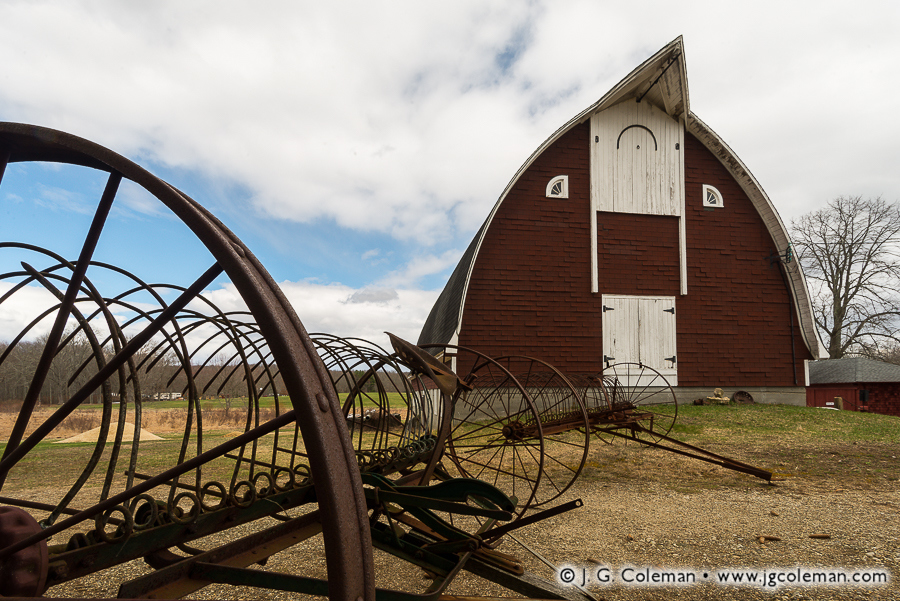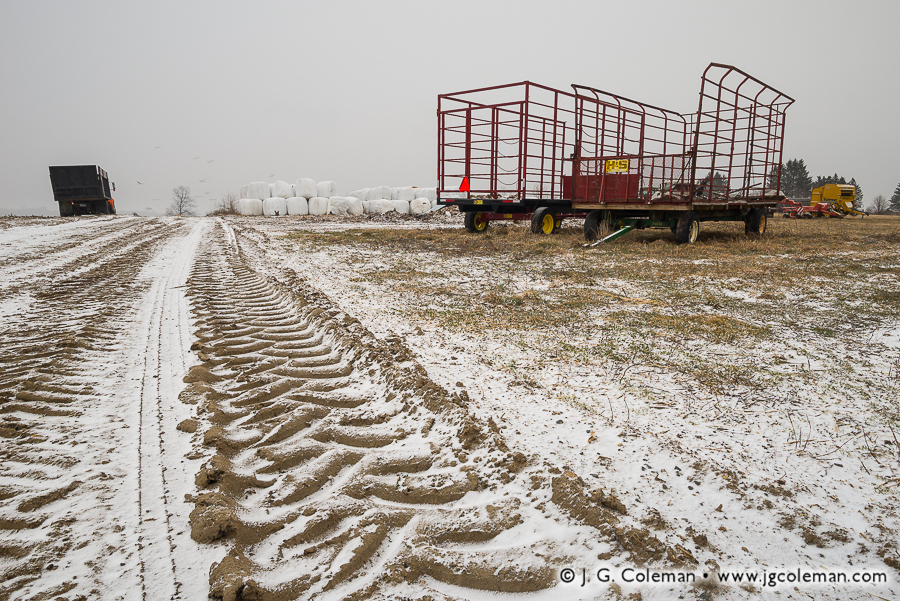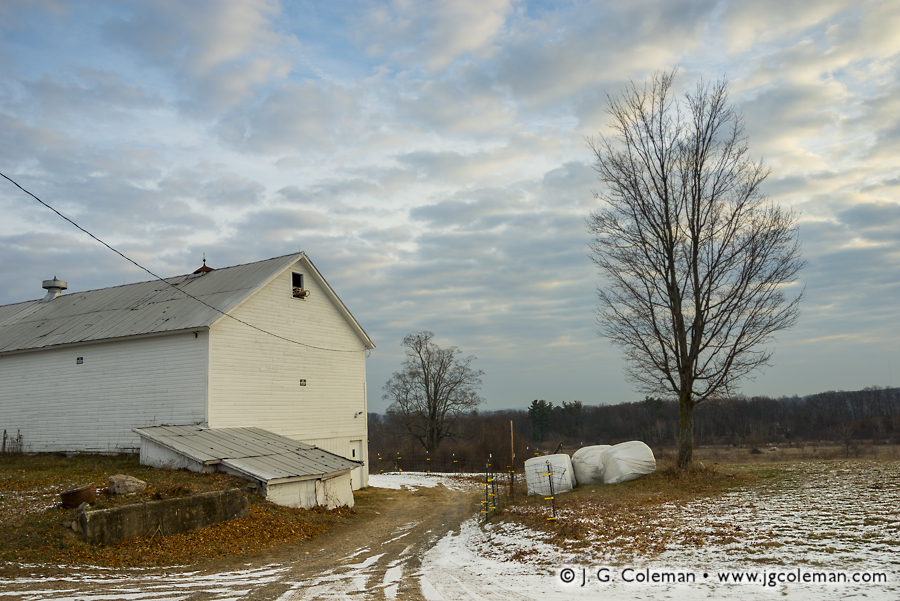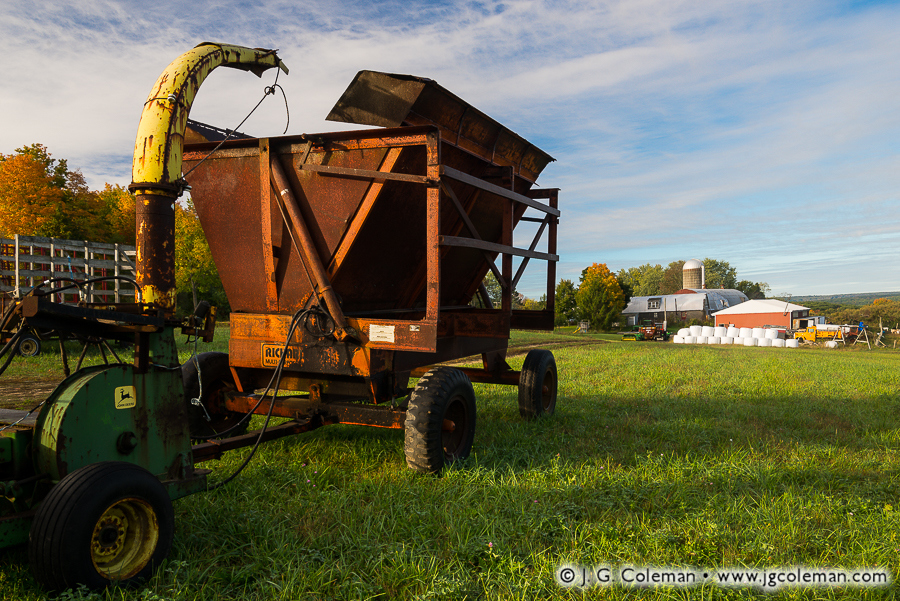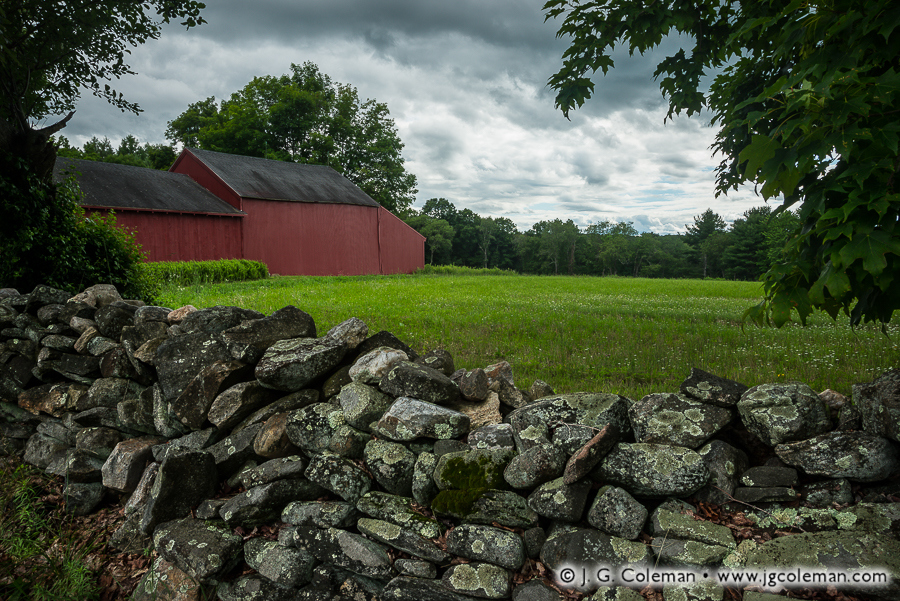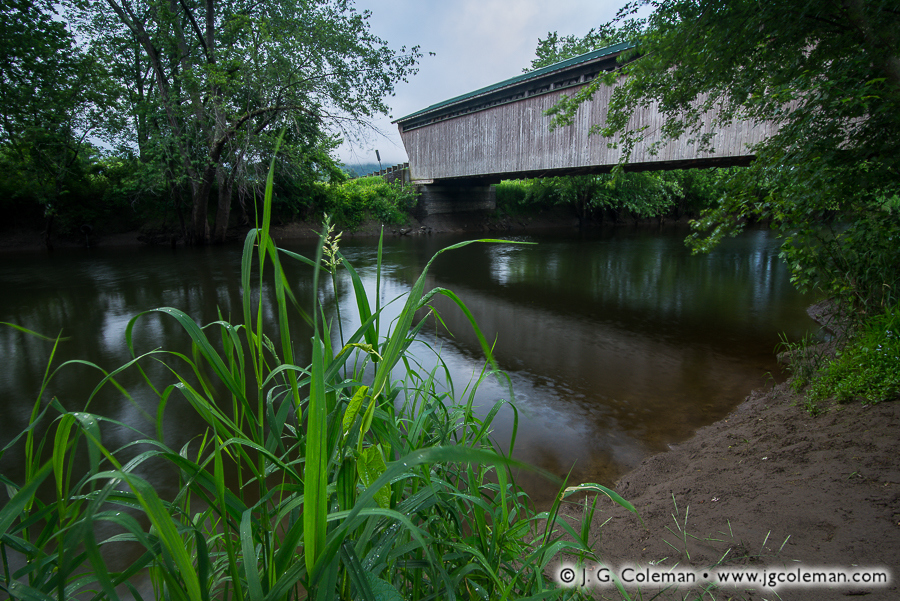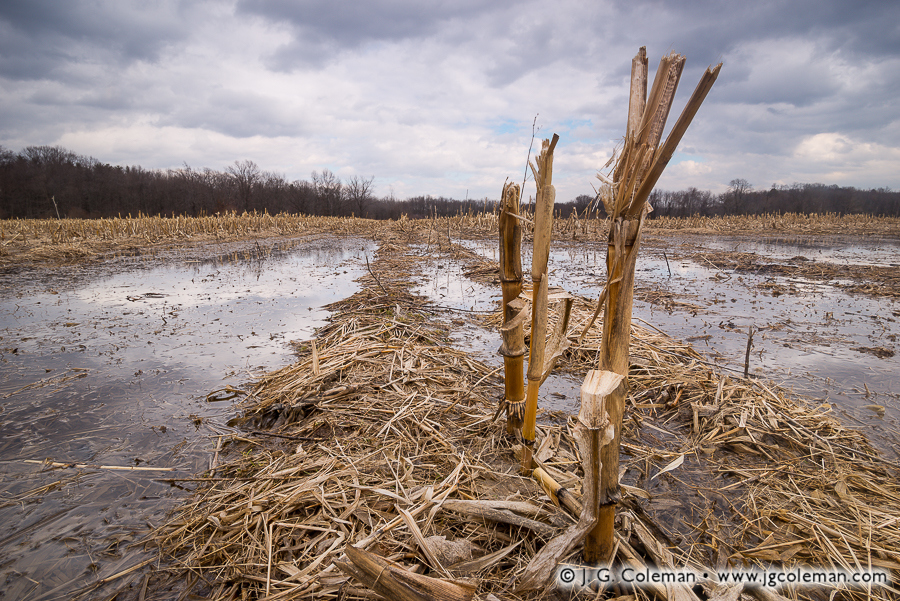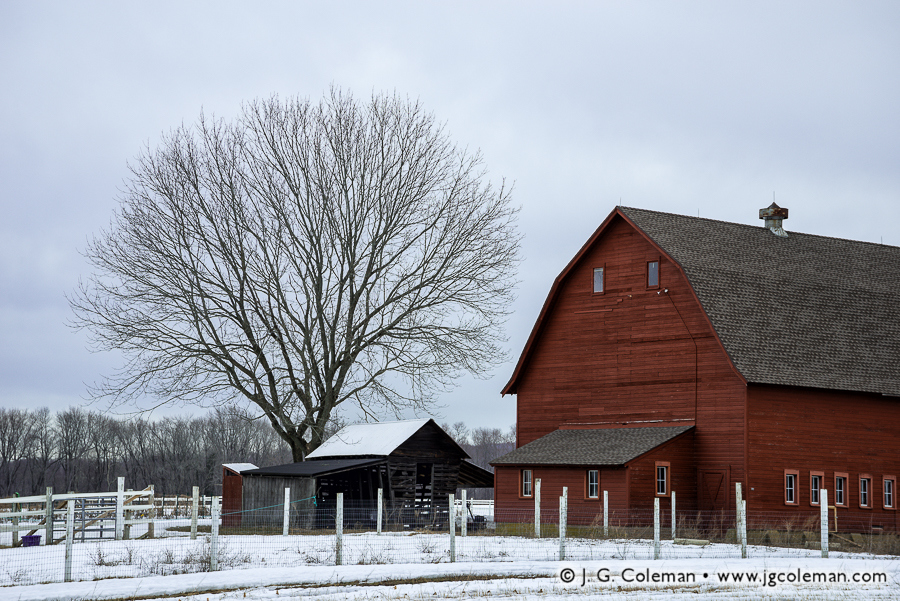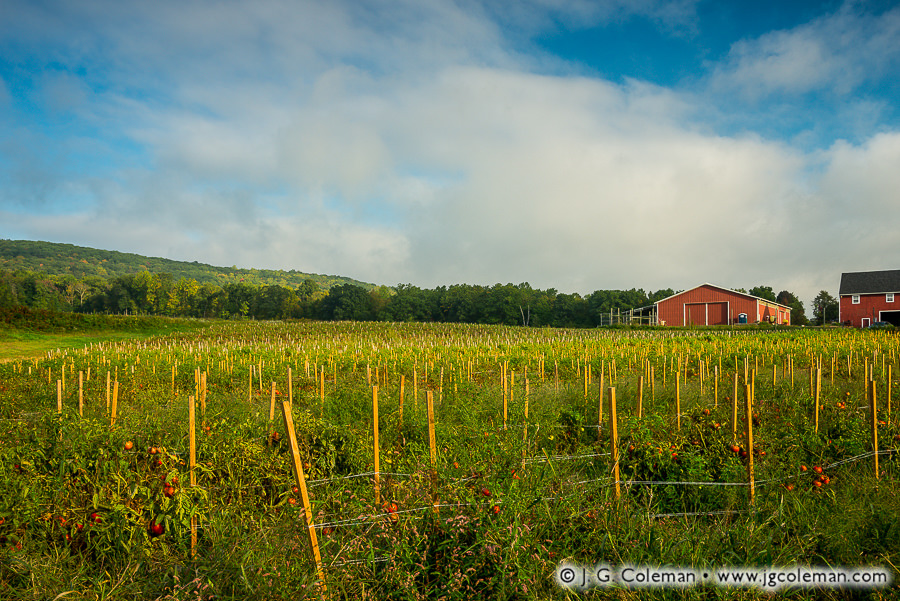
Field of tomatoes, Cheshire, Connecticut
© 2016 J. G. Coleman
As dawn breaks over the Naugatuck Valley in early October, thousands of stakes still dot a rolling field of tomato plants and bear the weight of the season’s waning crop. Barns peer down over the land from atop the farm as woodlands beyond climb ever higher toward a cerulean sky daubed with airy clouds.
Although the English were experimenting in their gardens with an exotic fruit known as the tomato as early as the 1500s, it would be a long time before they grew popular. Perhaps because the plant’s blossoms bore resemblance to poisonous wildflowers known as deadly nightshades, the tomato was widely believed to be toxic.
In fact, tomatoes were unheard of in the British colonies of North America for quite some time, with the earliest record of their cultivation appearing in the Carolinas in the early 1700s. Despite some lingering suspicions of the plant in America, tomato recipes began emerging en masse during the early 19th century. By the mid-1800s, it seems that the fallacy of the poison tomato, honored as common knowledge for two centuries, had finally been put to rest.
Purchase a Fine Art Print or Inquire About Licensing
Click here to visit my landing page for “Yankee Farmlands № 85” to buy a beautiful fine art print or inquire about licensing this image.
Want to See More?
Be sure to check out all of the work in my on-going Yankee Farmlands project.


